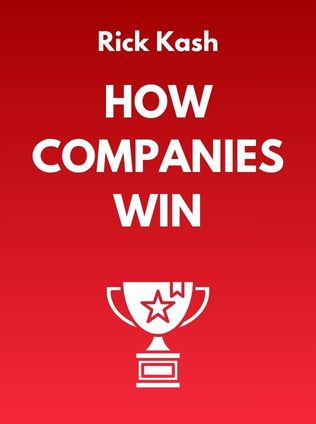
How Companies Win
Profiting from Demand-Driven Business Models No Matter What Business You're In
By Rick Kash,
Published 10/2010
About the Authors
Rick Kash is the founder and CEO of The Cambridge Group, a renowned growth-strategy consulting firm. He is also the author of "The New Law of Demand and Supply." Kash's extensive experience in consulting has provided him with deep insights into how businesses can navigate and thrive in the modern economic landscape.
David Calhoun has been the Chairman of the Executive Board and CEO of The Nielsen Co. since 2006. His previous role as Vice Chairman of General Electric Co. has equipped him with a robust understanding of corporate strategy and management, making him a key contributor to the concepts discussed in "How Companies Win."
Main Idea
The core premise of "How Companies Win" is the shift from a traditional supply-driven business model to a demand-driven one. In today's economy, characterized by oversupply and flat or contracting demand, companies must locate and capture high-profit demand pools to achieve sustainable growth and profitability. This book outlines a revolutionary demand-driven model that has proven successful for some of the world's most admired companies.
Table of Contents
- Introduction: A New Strategy for a New Era
- Shift: The Demand-Driven Company
- Strategy: The Fifth P - Precision
- Total Innovation: Myth-Free Innovation
- The Price is Right: Intelligent Pricing Strategy
- Execution: The Thesis for Winning and Mental Models
- The Demand Chain: Supply Meets Demand
- Afterword: A Fresh Start
Introduction: A New Strategy for a New Era
In the 1990s, the "big idea" was disintermediation, where new information and communication technologies aimed to remove intermediaries and streamline business processes. The dot-com boom and subsequent bust taught valuable lessons about the oversupply of goods and services and the importance of understanding demand. Surviving companies like Amazon and Google thrived by focusing on what customers wanted rather than what suppliers had.
"Their business was based on what customers wanted, rather than what the suppliers already had. They were the harbingers of the demand-driven economy." - Rick Kash and David Calhoun
Shift: The Demand-Driven Company
The concept of a demand-driven company is exemplified by McDonald's turnaround in the early 2000s. After suffering its first quarterly loss in 2002, McDonald's refocused on customer demand, launching initiatives such as healthier menu options and extended store hours. This shift led to significant revenue and profit growth, even during economic recessions.
"The single most important lesson to take away from McDonald's remarkable turnaround is this: understanding demand becomes the new imperative for how companies will compete and win." - Rick Kash and David Calhoun
- Understanding Demand: Companies must deeply understand the needs, wants, and behaviors of their most profitable customers.
- Demand Gap Analysis: Identifying gaps between customer expectations and current offerings is crucial.
- Customer Demand Analysis: Determining who the most profitable customers are and engaging them for insights.
McDonald's success story highlights the importance of reconnecting with the core desires of customers. The company's "Plan to Win" strategy, which focused on people, products, place, price, and promotion, brought about a remarkable turnaround. By prioritizing customer satisfaction and aligning their operations to meet demand, McDonald's demonstrated how a demand-driven approach could lead to sustained growth and profitability.
Strategy: The Fifth P - Precision
Precision is the new critical element in the marketing mix, alongside product, promotion, place, and price. In an era where consumers expect high precision from businesses, the ability to deliver exact solutions becomes a competitive advantage. Companies like Coca-Cola have already recognized this, declaring the current period as the "Age of Precision Marketing."
"In the face of this unprecedented increase in precision, is it any wonder that customers and consumers are increasingly impatient with inaccuracies, delays, and imprecision?" - Rick Kash and David Calhoun
To succeed in this environment, companies must adopt a more rigorous approach to understanding and meeting demand. This involves:
Sign up for FREE and get access to 1,400+ books summaries.
You May Also Like
Rich Dad Poor Dad
What the Rich Teach Their Kids About Money - That the Poor and Middle Class Do Not!
By Robert T. KiyosakiFreakonomics
A Rogue Economist Explores the Hidden Side of Everything
By Steven D. Levitt and Stephen J. DubnerThe Lean Startup
How Today's Entrepreneurs Use Continuous Innovation to Create Radically Successful Businesses
By Eric RiesWho Moved My Cheese?
An Amazing Way to Deal with Change in Your Work and in Your Life
By Spencer Johnson, M.D.Factfulness
Ten Reasons We're Wrong About the World – and Why Things Are Better Than You Think
By Hans RoslingMake Your Bed
Little Things That Can Change Your Life...And Maybe the World
By William H. McRaven



















